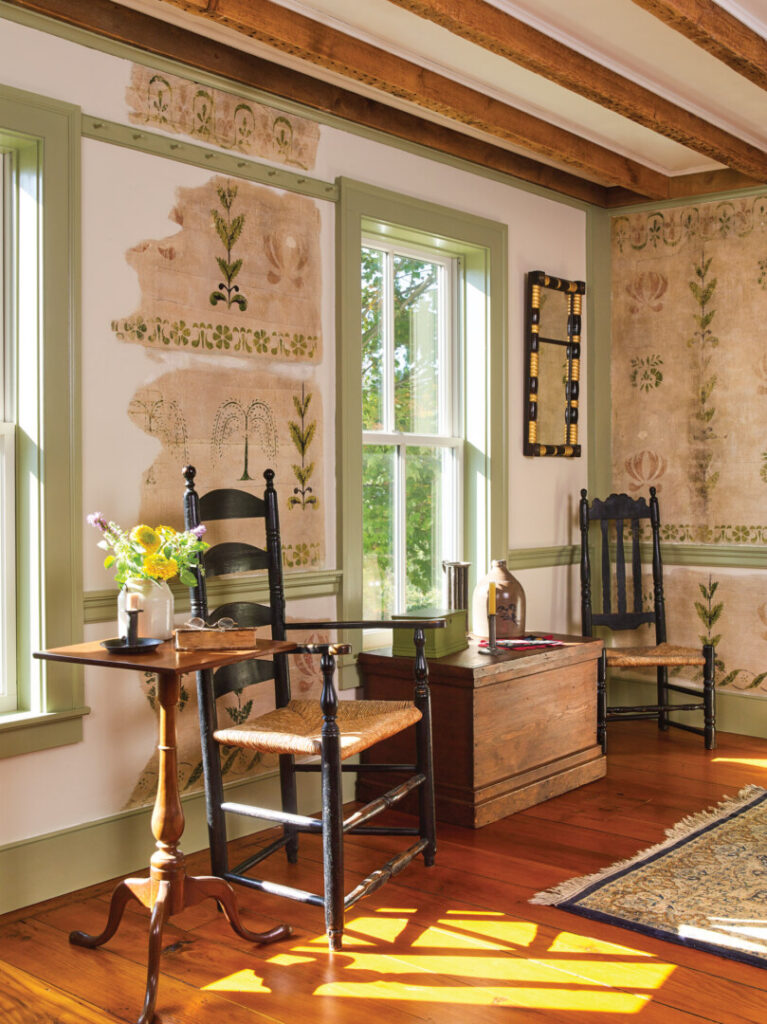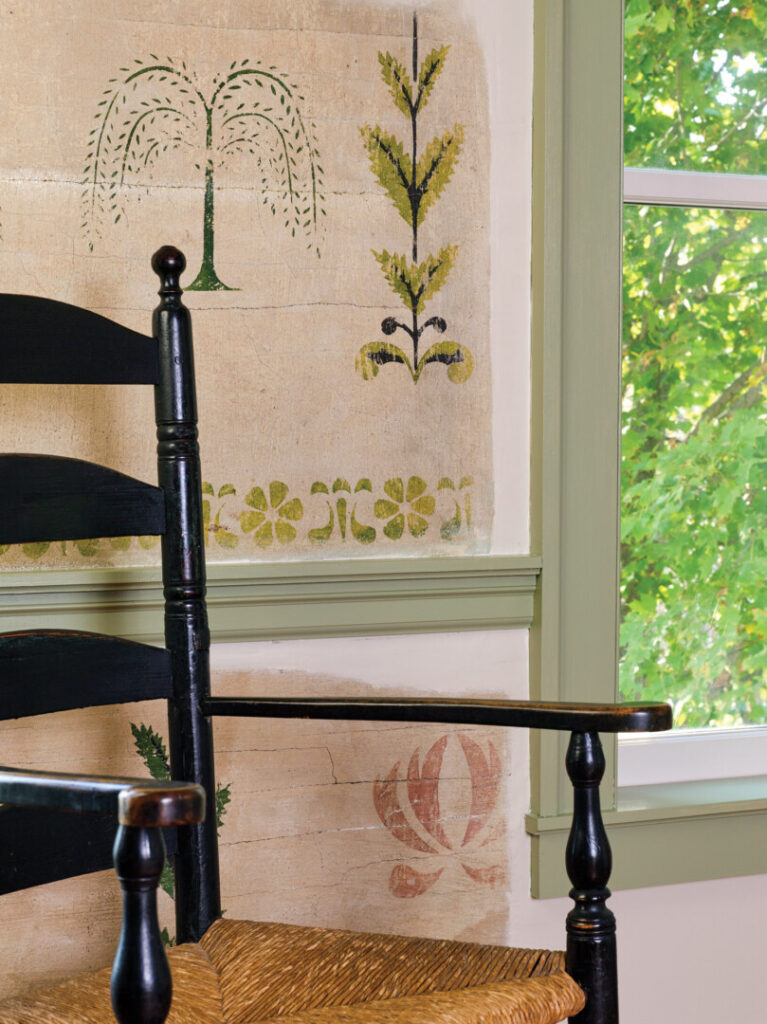
Gridley + Graves
Discovered beneath layers of later paneling, stenciled paint decoration on the walls of the front parlor was a wonderful surprise. Featuring garlands, blossoms, willow trees, vining greenery, and stylized borders, the stencils follow the forms of folk-art decoration popular in the early 19th century. Wallpaper was an expensive luxury at the time; stenciling provided more affordable pattern and color. Walls often were decorated by itinerant artists, who received room and board from the homeowners, along with a modest fee.
When Sallie Dunham–Davis first saw the stencils, she knew it was important they be saved. Her contractor used surgeon-like precision to cut around and preserve the stenciled plaster during renovation. Insulation was applied to these walls from the exterior, so as to keep intact what was left of the historic painting.

blossoms among them.
Gridley + Graves







